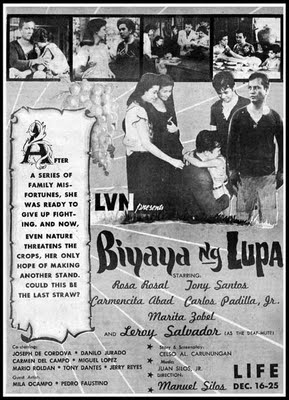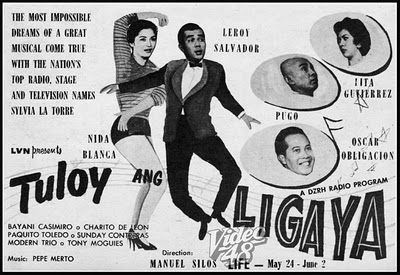MANUEL SILOS, director
Manuel Silos' career spanned
decades.
As an actor, he was known as Sano, the
comedian with the moving and rolling eyes.In 1927,
he
wrote and directed The Three Tramps , a short silent comedy
wherein
he played the part of the tramp.
In The Three Tramps ,
he worked with
his
three brothers-Cesar as cameraman, Octavio as labman, and
Augusto as a co-actor.
When Banahaw
Pictures was formed in 1930, Silos
became its first director. One of the pictures
he
directed for the movie company (which was the last to produce
silent pictures) was Mystery of the Convent , starring Naty
Fernandez and Eduardo de Castro.
He directed Mag-inang Mahirap ,
his first
talking picture, for
Filippine Films
when it was organized in 1934.
He also worked for
Sampaguita Pictures until the war.
Since Liberation, he was with
LVN Pictures where he came up with his
version of the zoom lens which he called Synchro
lens, the first to be used in local filmmaking.
He was doing Victory Joe for
LVN in 1946 and
he
saw the effect of cameraman Mike Accion's technique of taking a
close-up shot and following it with a focus on the background.
The picture seemed to jump so
he decided to smooth it
out with
his Synchro lens.
An inventor at heart,
Silos
conceived the Siloscope, a lens that held four frames together
in one screen. In 1955,
he directed Biyaya ng Lupa
which is considered one of Asia's classic films of the period.



